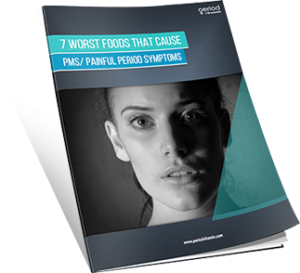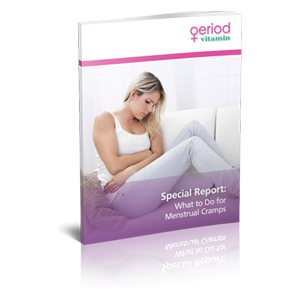Dealing with cramping in the abdominal area, upper thighs, and severe lower back pain is a serious concern for many women prior to, during and occasionally after their menstrual cycle. This is often called pre-menstrual syndrome and post menstrual syndrome.
What causes this pain and illness and how can it be treated with medications or home remedies?
Cause of Menstrual Cramping and Illness
So what causes cramping, thigh and back pain and other symptoms such as upset stomach, vomiting and fever, before, during and after a woman’s menstrual cycle?
What causes uterine cramping and some of these symptoms when not having a period at all?
Is this also possible?
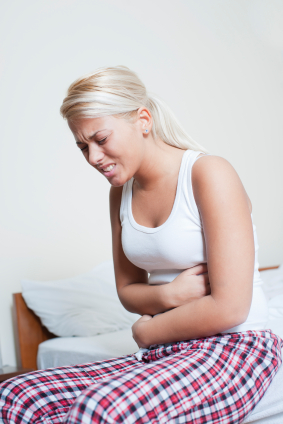 These cramps can be particularly debilitating and can be accompanied by headaches, nausea or vomiting, and quite often a severe back ache. They can occur on the left side and the right side.
These cramps can be particularly debilitating and can be accompanied by headaches, nausea or vomiting, and quite often a severe back ache. They can occur on the left side and the right side.
Many women have lost many productive hours to the pain of cramping. Occasionally a woman will suffer from a fever as well while experiencing pre-menstrual or period cramping. This pain can be extremely mild or excruciatingly difficult and no two women experience it in exactly the same manner.
Period cramping can last for a few hours in one woman and several days in another. Pain medication might also be required either prescription or OTC (over the counter) to alleviate cramping.
The cramping that a woman might feel before or after her period is not the same as the cramping associated with the period. The cramping associated with the menstrual cycle is caused by the shedding of the uterine lining.
These period cramps are usually in the abdomen, upper thighs, going down the leg, under the ribs and pelvis. A woman can experience cramps from PMS (pre- menstrual syndrome) and have them just continue into her period.
The headaches, nausea, vomiting, and back pain might all be treated with either prescription or over the counter (OTC) medications. There have been OTC (over the counter) medications such as Midol ™ available for PMS (premenstrual syndrome) and cramps for several decades. This medication also impacts other period issues such as bloating and other forms of menstrual cycle discomfort.
This type of cramping and cycle discomfort is common in more than half of all women. 15% of the women who do suffer with cramping consider the pain to be severe. In studies of just adolescent girls nearly 90% of all respondents reported having experienced pain and cramping with their period. So you can see how prevalent and how serious a dilemma it really is.
Menstrual cramping usually starts after ovulation but it is possible to have the cramping but no period. Usually a young girl will start with period cramps before their first period and it can intensify from there. However as previously mentioned some women do not have menstrual cramping at all. It just really varies from one woman to the next.
Quick Ways to Reduce Period Cramping (Pharmaceutical)
There are some quick and easy ways to get rid of period cramps before the get to the point of being debilitation and you cannot get out of bed for 24 to 48 hours.
- Midol does seem to work effectively and quickly and it is an OTC (Over the Counter) medication as is Pamprin. So if you need it in the middle of the night you can get it at any 24 hour drug store.
- Warm bath or heating pad is certain to help with period cramping.
- OTC (Over the Counter) NSAID s (non-steroidal anti-inflammatory drug) such as Motrin or naproxen will help quickly reduces cramping.
- You can temporarily relieve period pain by lying in the fetal position with your knees tucked as close to your chin as possible.
- Not fast, but another way to reduce cramping is by taking birth control medication.
Natural and Home Remedies for Cramping
There are many natural and home remedies as well as preventions for period cramps. Some work after the cramping has started and some must be done before the cycle starts. Some of these are preventive and must be done all the time and all are homeopathic.
Yoga: Perform yoga positions that help to balance the function of the uterus.
Exercise: When you exercise on a regular basis you can ward off period cramping before it ever begins. It does not need to be especially strenuous exercise, simple walking will do. Swimming works well too. The key is aerobic exercise with emphasis on the abdominal, thigh and back muscles. Stretching also helps considerably.
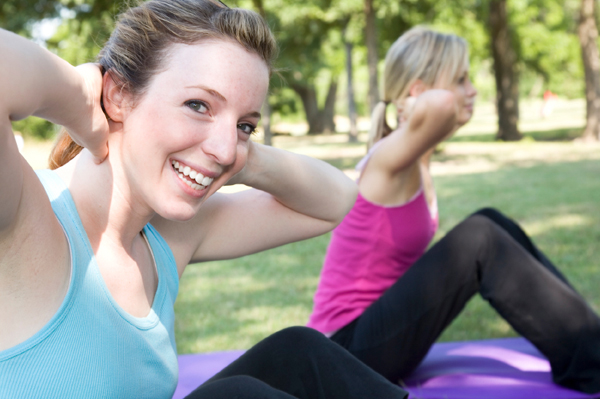
Supplements: Some of the vitamins and supplements that work best include zinc, vitamin d, magnesium, vitamin B-B6, calcium. These supplements work because they either relieve stress, pain or add stamina as in the B complex vitamins, or pain relievers like calcium and magnesium. Zinc reduces many of the PMS (premenstrual syndrome) and period symptoms such as cramps and bloating.
Herbs: There are many helpful herbs that can be used in many different ways when it comes to cramps. Most of these herbal remedies can be made into teas or compresses. Some might also be used in aromatherapy. One of the most effective herbs made into tea is Black Cohosh along with chamomile, ginger and white willow bark. Cramp bark and valerian root will help to alleviate uterine spasms and thereby reduce the cramping pain.
Peppermint and mint tea along with basil are also good remedies for uterine contractions and period cramping. The following herbs can also be useful in reducing cramps: Lachesis mutus, Bryonia, Caulophyllum thalictroides, Belladonna, Catus randifolia, Magnesia phosphorica, Colocynthis, Medorrhinum, Cimicifuga, Pulstilla or Nuxvomica. Regardless of the herb you choose try to ingest at least a couple of cups every day during your period.
Non tea hot fluids: Coffee or plain warm water will also help to reduce the cramps. These warm liquids help to relieve the congestion and stress in the muscles and provide relief.
Relaxation and meditation: Try meditation or try deep breathing and other relaxation techniques as opposed to medications to relive the pain of cramps.
Sleep: Make sure you get enough sleep, maybe even extra sleep before and during your period to reduce the pain of cramping.
Massage: Gently massage the abdomen and the lower back to relieve cramps. When you are having the menstrual cramps, massaging pressure points will help to increase circulation and thereby will help to relieve pain from cramping and increase energy.
Omega 3-Fatty Acids: Add Omega 3-fatty acids to your diet: There are several relief foods that you can eat including more fish – especially fresh cold water fish like herring, halibut, sardines, tuna and salmon. You can also take a supplement of fish oil. This will help prevent the formation of prostaglandins that add to cramping.
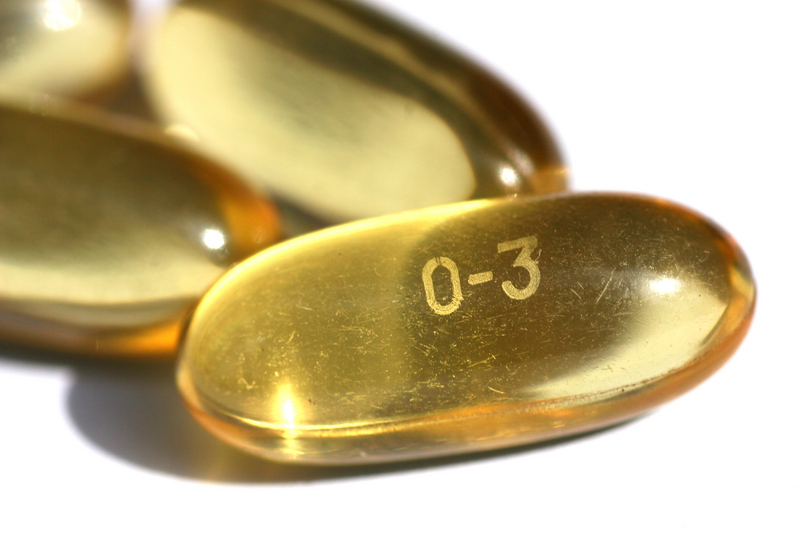 “Making dietary adjustments starting about 14 days before a period may help some women with certain mild menstrual disorders, such as cramping. The general guidelines for a healthy diet apply to everyone; they include eating plenty of whole grains, fresh fruits and vegetables, and avoiding saturated fats and commercial junk foods. Effects of Dietary Fats.
“Making dietary adjustments starting about 14 days before a period may help some women with certain mild menstrual disorders, such as cramping. The general guidelines for a healthy diet apply to everyone; they include eating plenty of whole grains, fresh fruits and vegetables, and avoiding saturated fats and commercial junk foods. Effects of Dietary Fats.
A 2000 study reported that women who followed a low-fat vegetarian diet for two menstrual cycles experienced less pain and bloating and a shorter duration of premenstrual symptoms than those who ate meat. Women who are losing too much blood, however, may need meat to help maintain iron levels.
Choosing more fish and eggs may be a helpful alternative. More than one study has reported less menstrual pain with a higher intake of omega 3 fatty acids (fat compounds found in oily fish, such as salmon and tuna). In one study, supplements of fish oil also appeared to reduce heavy bleeding in adolescent girls.” (http://adam.about.net/reports/000100_6.htm)
Fruits: Take bananas and make a pulp from them and this will reduce cramps. It is also good to consume pineapple juice which has bromelain and can act as a muscle relaxer. If you relax the muscles around the uterus you will help reduce cramps.
Red Meat: Red meat increases the formation of prostaglandins as does non-organic fowl and poultry and most dairy products. So the more you can avoid these foods the better for reducing cramps.
Eat only organic poultry and eggs for the same reason.
Acupuncture and Acupressure: Try acupuncture and acupressure: Acupuncture requires that you see a professional skilled in this medicinal art but acupressure is something any woman can be taught to do for themselves. Both of these ancient arts will reduce the pain and cramping from the cycle.
Drink water: You hear this over and over again on so many levels but it is as important to the relief of menstrual cramps as is it to diet and exercise. You might think it makes no sense to add fluids when you feel bloated already, but it is very important to consume 8-10 glasses of water every day to prevent and alleviate period cramping. On the other hand be sure to empty your bladder every time you have the urge and do so as quickly as possible.
Less Salt: Reduce intake of salt before your period. Salt adds to the problem of bloating and bloating adds to the likelihood of cramping.
Most women experience the worst menstrual cramps from the time they begin menstruating around age 10 or 12 until they are in their late 20s. Some women have cramps well into their 30’s and 40’s so these hints may be helpful for them as well. Most importantly when considering how to deal with painful cramping is prevention and treatment. The more you can prevent period cramping with exercise and diet the better off you will be of course. If you cannot entirely cure period cramps then follow the hints we have offered to deal with them.


